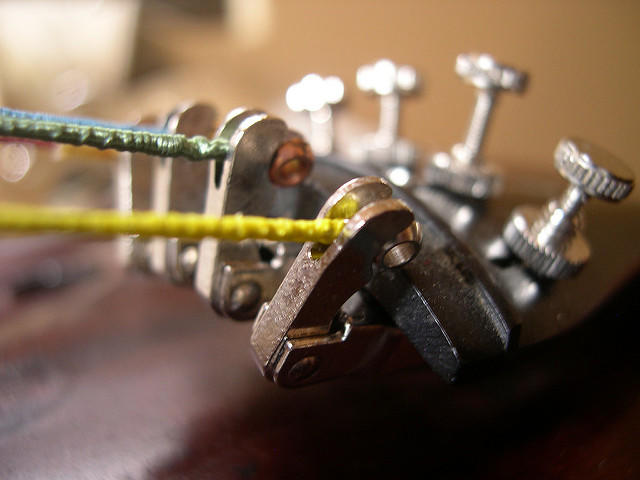The soul is like a violin string: it makes music only when it is stretched. Neal A. Maxwell
The heart of violin playing is in the tune. The violin’s heart starts beating when you play that beautiful sound ... when it’s in tune.
Therefore, learning how to tune your violin plays a fundamental role in becoming an avant-violinist. Tuning your violin will become a part of your regular violin play routine. But before you learn how to tune a violin you'll first have to find the right violin.
Just like maintaining your violin on a daily basis, you will tune your violin very often to ensure you are playing the perfect tune. If a violin is out of tune and you play an ensemble such as a symphony orchestra, you will immediately notice it.
Tuning of a violin is no easy feat if you are a beginner, but not to worry, you will learn how to tune your violin in no time. Whether you buy your first violin or you rent a violin it's an important skill to learn. This article is here to guide and give you some tips to help you learn how to tune your violin. Here is what you can expect to read about:
- How to tune your violin
- Tips for beginners
- Ways to tune a violin
- The different types of violin tuners
- Violin tuning apps and which one is the best
Let’s begin …

How to Tune Your Violin
If you are a beginner learning to tune your violin you’ll first have to know what notes to tune your violin to. The strings should be tuned to the following notes:
- G (thickest and lowest)
- D
- A
- E (thinnest and highest)
The four strings are tuned in perfect fifths. There are three ways in which you can tune your violin, they are:
- With a Piano
- Tune with a Tuning Fork
- Using a Tuner
- With an app
If you are a beginner, prefer convenience or don’t own a piano, using a tuner or an app will work best
There are two ways to change the pitch of the violin strings: the pegs and the fine tuners.
The tuning pegs on the violin are used to modify the tension on these strings. These pegs can be turned to tighten or loosen the corresponding strings.
At the top of the tailpiece, certain violins, particularly those intended for beginners, also contain fine tuners. The fine tuners can be used to tune each string more accurately once the wooden pegs have roughly tuned each string to the correct tone. These function similarly to the wooden pegs, adjusting the strings' tension just a little bit.

Now that you have a better understanding of the elements that will help you get your violin in tune, let’s get to how the process works.
You should start tuning your violin with the A string. Start by plucking the A string and compare it to the A note on the piano or on the violin tuner. If there is a big difference you will adjust the corresponding wooden pegs. Use the fine tuners if there is only a slight deviation between the A string's pitch and concert A.
If you are satisfied with the sound of the A note, move along to adjust the other notes in this order: D, G & E
Here are a few quick beginner tuning tips to help you ...
Violin Tuning Tips for Beginners
- Tune from low to high
- Tune the A string first
- Use small adjustments
- Use your fine tuners as much as possible
- Remember for fine tuning: “Righty tight, lefty loosey.”
- Try to only use your pegs when you have replaced your violin strings
- When the pitch of the string is too high you will need to loosen the string
- When the pitch of the string is too low you will need to tighten the string
- Turn the pegs slowly and carefully
- Brand new strings require frequent tuning.
Do you feel more confident to start tuning your violin with our tips? Now, let’s dive into the different types of violin tuners.
Violin Tuner Possibilities
You will be happy to know that there are many violin tuner options to help you get into tune. If you don’t have a perfect pitch and you aren’t confident to tune your violin manually with a piano, you’ll need some help.
Here are the three tuners you get:
- Standard Microphone tuner: As their name implies, microphone tuners operate by hearing the note that an instrument is playing. The note being played is displayed on the screen as the electronic tuner "listens" to it. It also has a needle that indicates whether the note is high or low.
- Metronome tuner: Instrument tuners that are integrated into metronomes are known as metronome tuners. Some may do the task of tuning microphones, while others may only play a specific note for players to gauge their tuning against.
- Clip-on chromatic tuner: Instead of hearing the note itself, clip-on tuners detect the frequency of the vibration of the strings through the violin's headstock. This is especially useful if you are rehearsing where there are many other instruments in the room.
When buying a tuner, keep in mind that they are not sold as “violin tuners” because they can also be used to tune other stringed instruments. Like with violin prices, a tuner’s price will depend on the quality as it goes hand in hand.
The Crème de la Crème of Violin Tuning Apps
In today’s life and with all the technological advancement, violin tuning has never been this easy. If you have a smartphone, tuning your violin is as easy as installing an app on your mobile phone.
Nowadays, it’s much easier for musicians to tune their instruments with groundbreaking technology at their fingertips. A headstock tuner senses the vibrations of an instrument directly, whereas a tuning app works using a microphone - making it less complicated.
There are a few apps that will easily help you to tune your violin. We are going to compare three tuning apps that are popular amongst violinists to determine the best one.

1. Cleartune
This paid app is ideal for intermediate or advanced musicians.
It has a myriad of different and valuable features and you can use it for various instruments - the violin being one of them. One of its greatest features is transposition - allowing you to move a collection of notes up/down in pitch by a constant interval. In simple terms, it can take a melody or chord sequence and change the pitch of the notes while keeping the relative intervals between them the same.
Accessibility: iOS and Android
Price: Around R77,06
Superprof’s best-loved feature: It also allows for manual or automatic note selection.
2. Tuner Lite by Piascore
With an amazing start rating of 4.5/5 out of more than 7 000 reviews, Tuner Lite is a chromatic instrument tuner and pitch pipe. This app is absolutely free. It is a very simple and straightforward tuner app. If you are a beginner this app will be a good option. It gives you visual and audible cues to let you know you are on the right note. The only downside is that it’s only for iOS users.
Accessibility: iOS
Price: Free
Superprof’s best-loved feature: Simple and straightforward
3. Master Violin Tuner
The Master Violin Tuners is another free app that will help you tune your violin quickly and with precision. So if you want to tune your Stradivarius more efficiently this app might be your go to. It’s easy to use and has two modes: tuner & pitchfork.
Accessibility: Android & iOS
Price: Free
Superprof’s best-loved feature: Perfect for beginners and professionals
4. Violin Multi-Tuner
The violin multi-tuner is jam packed with multiple features and that’s why we love it. Its main function is violin tuning but it includes extras like ear and sight reading exercises and playable fingerboard. So even if you don’t have your violin with you, you can still practice your musical ear.
Accessibility: iOS
Price: around R34
Superprof’s best-loved feature: Range of extras and bonus tools
These are just a few of many fantastic apps for you to choose from. Most of the time the app that will be best for you is a personal choice and will depend on your level and the features you would like included.
If you are finished tuning your violin remember to wipe your bow and violin with a clean dust cloth and to put it away safely - it is important to take good care of your instrument.















